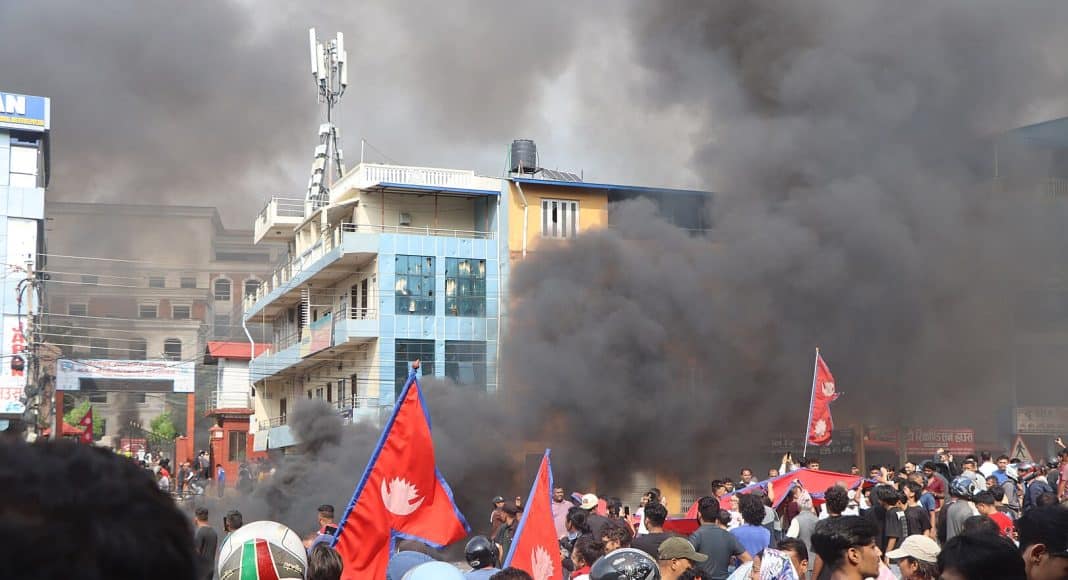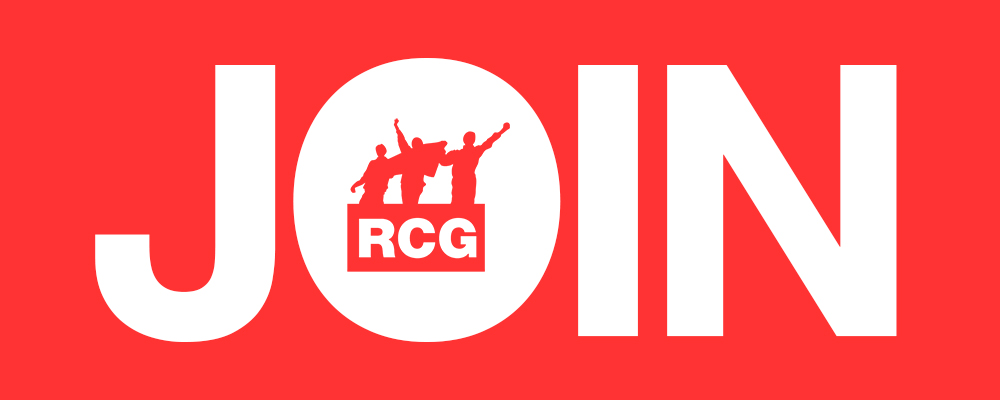On 8 September widespread youth protests broke out in Nepal, triggered by the government’s shutdown of 26 social media platforms, including Facebook, X, YouTube, LinkedIn, Reddit, Signal, and Snapchat, four days earlier. The government claimed the shutdown was to increase tax revenues on foreign social media companies. However, after several days of angry online responses by the youth, attacking nepotism and pointing to the privileges enjoyed by the families of government leaders, the protests developed into violent confrontations with police. Tens of thousands of protesters, mostly young, took to the streets in opposition to the ban. Social media platforms had been the busy channel of criticism against corruption among Nepal’s political elite. Denied these, the youth used the streets instead. ALVARO MICHAELS reports.
The large-scale protests were predominantly organised by Generation Z – those born between late 1995 and 2010 – and expressed the public’s frustration with corruption and the mismanagement of public funds, poor governance, lack of transparency and political accountability. The protests escalated with attacks on public officials and government and political buildings throughout the country. Police and armed forces responded with force, including the use of live ammunition. Numerous young people were killed in front of the parliament building. A curfew was imposed in several major cities including Kathmandu, Birgunj, Bhairahawa, Butwal, Pokhara, Itahari, and Damak. The Home Affairs minister Ramesh Lekhak resigned from his post.
This violent crackdown further provoked the protesters, resulting the next day in massive demonstrations across the capital, which the government again attacked. Protesters broke through police barriers and stormed the Parliament compound. Several rooms in the Federal Parliament building were ransacked and torched, and dozens of cars parked outside were destroyed. The army evacuated the politicians. The airport was closed. The homes of Prime Minister KP Sharma Oli, President Ram Chandra Poudel and the houses of former Prime Minister Sher Bahadur Deuba and other ministers were set on fire, as was the Hilton hotel and the Ministry of Health building. The Nepali Congress Party headquarters was vandalised, with party flags stripped and burned. The administrative offices of the Government of Nepal, the adjacent building of the Supreme Court of Nepal, the president’s residence at Sital Niwas, and the headquarters of the Communist Party (UML) were burned down. By the evening the capital, Kathmandu, resembled a burned-out war zone. Oli announced his resignation that afternoon and fled to a military barracks for protection. The shaken government then reversed its ban on the 26 social media platforms. Following this, protests for the complete dissolution of parliament succeeded. This was the bloodiest day of protest in Kathmandu’s history.
After this only the president and the army remained able to respond, and they selected representatives from the ‘Gen Z’ protesters. These included the popular young mayor of Kathmandu, Balendra Shah. Protests continued into the early morning of 12 September. This group then selected a former Supreme Court chief justice, Sushila Karki, as temporary PM until fresh elections could be held on 5 March 2026. By 13 September the protests had died down. Karki was Nepal’s first female chief justice and tough on corruption while in office between June 2016 and July 2017, but her enthusiasm in routing out corruption soon led to her removal, after which she campaigned against corruption across the country. Karki is the first woman to head the government of Nepal.
By 14 September, a total of 60 protestors, nine prisoners, and three policemen had been killed during the demonstrations and more than 1,347 had been injured.
The pre-conditions
The ten-year ‘People’s War’ (1996 to 2006) in Nepal was led by the poorest peasants in the country who formed a communist (Maoist) party, rejecting exploitation, high levels of unemployment, ethnic discrimination and re-strictions on citizenship. It resulted in the abolition of the monarchy in 2008, and the formation of a democratic republic.
Nepal’s army prevented the revolutionaries’ aim of a people’s republic, so their organisations entered the Constituent Assembly. State power in Nepal under Communist leadership ignited renewed hope for the left. Nepal’s three major political parties are the Nepali Congress – the largest Congressional party – the Communist Party of Nepal (Unified Marxist–Leninist), and the Maoist Centre.
Nepal’s Communist movement suffered internal factionalism. From 2008 to 2025, the country experienced over a dozen changes of government, primarily involving leftist or left-led administrations. The view grew that the Communist leaders were preoccupied with internal matters. The Communist-led government was slow in drafting a new constitution and the new provincial structure proved ineffective. Economic inequality remained un-addressed. The government’s failure to safeguard the rights of minority ethnic groups and Dalit communities became increasingly apparent.
In the 2022 mayoral election in Kathmandu, a young independent candidate Balen Shah – a rapper and structural engineer – beat establishment candidates with 38.6% of the vote, and changed Nepal’s political landscape. Shah has broken the traditional development debate.
Unemployment
In 2022-23, youth unemployment for those aged 15-24 reached 22.7%, up from 7.3% in 1995-96. Overall unemployment stood at 12.6%, up from 11.4% in 2017-18. Many young people have emigrated. Remittances from migrant workers have helped keep the economy afloat, but internal economic inequality has not been reduced. In the 2022-23 in urban areas, those living below the poverty threshold was 18.34%, compared to 24.66% in rural areas. The urban elite have taken most of the wealth and benefits. The income of the richest 10% of the country is more than three times that of the poorest 40%.
The political crisis in Nepal
The anti-government mass movement in Nepal developed because of two decades of failed economic policy by the Congress and Communist parties. Repression, the failure to decentralise power, and the establishment of a self-interested bureaucratic system have fostered a climate of resentment cumulating in opposition to the overall establishment.
Nepal’s political system, despite the popular demand for communist parties, has failed to meet the expectations of the working masses. The promise of reform that began after the end of the monarchy has deteriorated into the politics of intra-party conflicts. This failure allowed the emerging social movements and self-governing organisations to challenge the mainstream parties.
FRFI 308 October/November 2025




